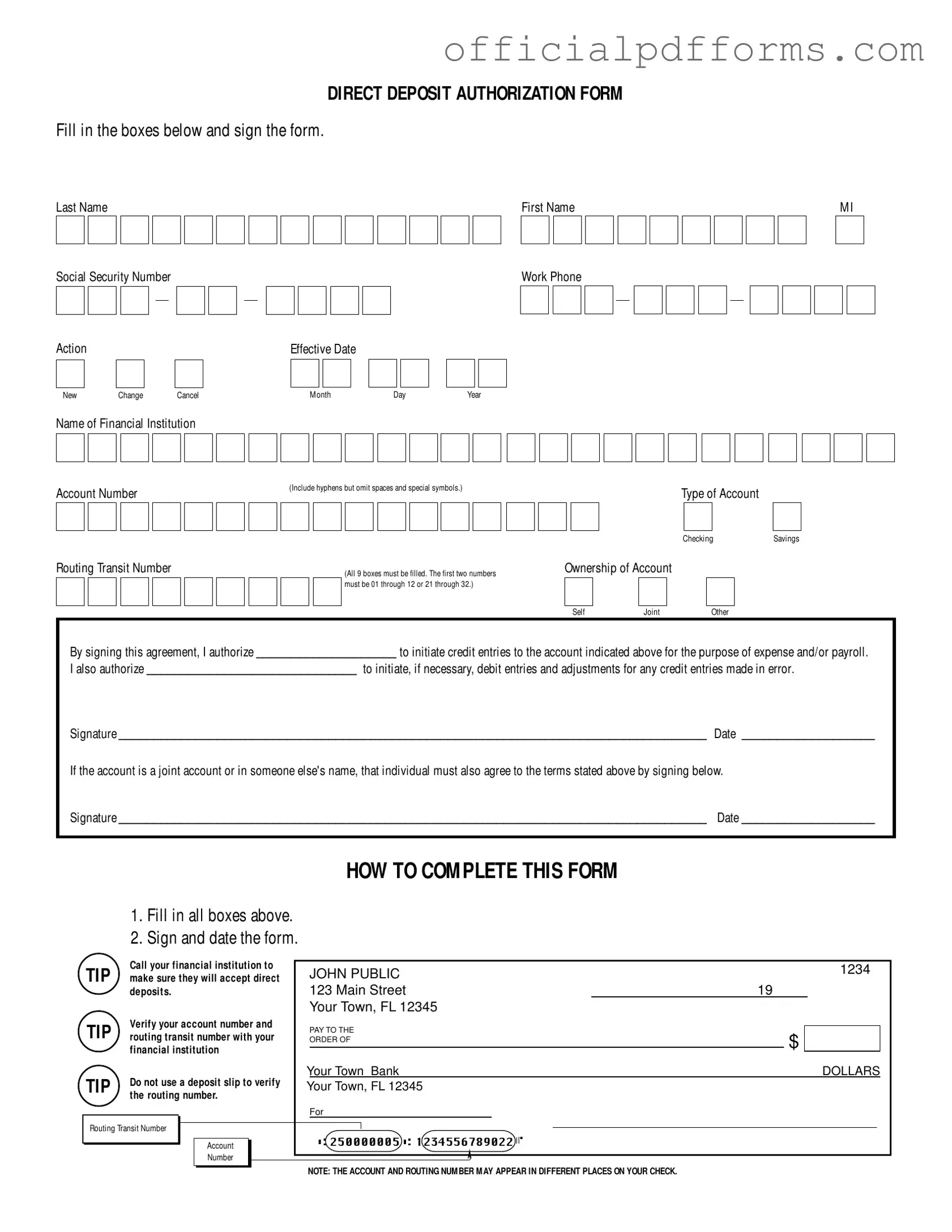The Generic Direct Deposit form is a document that allows you to authorize your employer or another organization to deposit funds directly into your bank account. This can include payroll, expense reimbursements, or other payments.
To complete the form, follow these steps:
-
Fill in all required boxes, including your name, Social Security Number, and account details.
-
Choose whether you are setting up a new direct deposit, making a change, or canceling an existing deposit.
-
Sign and date the form to authorize the transactions.
Make sure to verify your account information with your financial institution before submitting the form.
You will need to provide the following information:
-
Your full name
-
Your Social Security Number
-
Your work phone number
-
The name of your financial institution
-
Your account number
-
Your routing transit number
-
Ownership of the account (self, joint, or other)
What if my account is a joint account?
If your account is a joint account, both account holders must sign the form. Each person must agree to the terms stated in the authorization.
What is a routing transit number?
A routing transit number is a nine-digit code that identifies your financial institution. It is essential for processing direct deposits. Ensure that all nine boxes are filled in correctly, with the first two digits between 01-12 or 21-32.
No, do not use a deposit slip to verify your routing number. Instead, contact your financial institution directly for accurate information.
How long does it take for direct deposit to start?
The time it takes for direct deposit to begin can vary. Typically, it may take one to two pay cycles after submitting the form for the changes to take effect. Check with your employer for specific timelines.
What should I do if I change my bank account?
If you change your bank account, you need to fill out a new Generic Direct Deposit form. Indicate that you are making a change, and provide the new account and routing information. Submit the updated form to ensure that future deposits go to the correct account.
If you have questions about the form or the direct deposit process, contact your employer's payroll department or your financial institution for assistance. They can provide guidance and clarify any concerns you may have.
